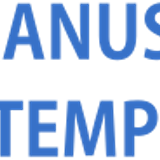Effect Of Chemicals On The Formation Of Tar Balls From Overboard Water Discharges An Analysis Of Environmental View
Abstract
The ratio of produced water to produced hydrocarbons increases over the lifetime of an oil well. It is common that oil well production fl uids in the old reservoirs are eventually composed of 90% or more of water and only 10% or less of hydrocarbons. After the initial separation of the bulk produced fl uids, the produced water still contains fi nely dispersed solids and hydrocarbons. It must either be re-injected underground or discharged to surface waters, such as oceans. Strict overboard discharge limits are set by the government regulation. The oil content of overboard water is limited by the Ministry of Environment to be less than 50 mg/L. Various chemicals have been developed as proprietary chemical separation aids to effect and accelerate the separation of oil, water, and solids from each other. These chemicals are commonly referred to as de-emulsifi ers and water clarifi ers. Other chemicals, for example corrosion inhibitors, have properties that are contradictory to de-emulsifi er and clarifi er. These non-separation aid chemicals will absolutely affect the fl uid (oil and water) separation. In the last couple of years, there were problems with the tar balls and chocolate mousse found in the coastal regions of Indonesia, such as at Pulau Seribu and Eastern Coast of Kalimantan. Although these tar balls do not frequently happen, these problems have given nuisance to the surrounding communities especially the fi shermen. This paper is intended to give an analysis of environmental view of the possible factors that might contribute to the formation of tar balls and chocolate mousse from the overboard water discharges from the old oil fi elds.
Keywords
Full Text:
PDFReferences
Anonymous, 2010, Environmental Ministerial
Regulation No. 19-2010 describing Waste Water
Qualty Standard for Oil and Gas and Geothermal
Activities, signed by the Minister of Environment,
Prof. DR. IR. Gusti Muhammad Hatta, MS., Jakarta,
November 2010.
Anonymous, 2012, Nurchemicals oil and water
treatment chemicals, http://www.nurchemi-cals. com/
Products_Chemicals/water_treatment.htm
Anonymous, 2012, Oil & Gas Production - Demulsifi ers
- Emulsion Breakers, http://www. bakerhughes. com/
bakerpetrolite/oilgas/emulsion_breakers.htm.
Auflem , I. H., 2002, Influence of Asphaltene
Aggregation and Pressure on Crude Oil Emulsion
Stability, Thesis Submitted in Partial Fulfilment
of the Requirements for the Degree of DOKTOR
INGENIØR, Department of Chemical Engineering,
Norwegian University of Science and Technology,
Trondheim, Norway.
Hart, P, Towner, J, and Cheng, J, 2009, Water Clarifi er
Improves Throughput, Oil Quality, and Overboard
Water All, Integrated Petroleum Environmental
Consortium (IPEC) Conference, http://ipec.utulsa.edu/
Conf2003/Papers/hart_towner_cheng_55.pdf.
Hennessy, T, 2004, Theory of Water Clarifi cation,
The Analyst, the Voice of the Water Treatment Indusri,
Vol. XI, Number 1, http://www.awt.org/members/
publications/analyst /2004/2004_issues. htm.
SALAGER, Jean-Louis, 1994, Interfacial Phenomena
in Dispersed Systems, FIRP BOOKLET # E120-N,
Teaching aid in Surfactant Science & Engineering
in English, Universidad de Los Andes, Facultad de
Ingeniera, Escuela de Ingeniera Quimica, Mérida-
Venezuela.
DOI: https://doi.org/10.29017/SCOG.35.2.781

This work is licensed under a Creative Commons Attribution-NonCommercial-NoDerivatives 4.0 International License.






